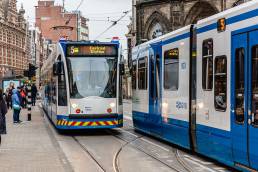Forward-thinking data analytics specialists, Motion-S, use localisation data to gauge a broad range of factors that can influence vehicle performance, driver behaviours, and ultimately insurance costs.
We spoke with marketing manager, Isabell Scherer, to understand where the sector is headed.
Analysis Means Absolute Accuracy
You can tell a great deal about driving performance from a small number of factors – where the driver has been, at which time, and under which circumstances.
However, in order for these to have a real bearing on things like predictive maintenance, car wear, and its ‘eco score’, we need absolute accuracy.
While we gather data from smartphones and rely on data coming from the driver, we rely heavily on mapping technology from Local Eyes to contextualise this localisation data and explain the driver’s environment.
This information allows us to safeguard all kinds of vehicles – enabling us to determine a range of maintenance issues – such as when brakes need changing or when a car is most likely to need essential repairs: increasing all-round safety.
Manufacturers can also use the data to improve a product’s lifespan: allowing them to engineer more resilient and efficient vehicles and components moving forward.
Empowering All Kinds Of Customers
Insurance companies are a core customer group of ours. Using driving data, we can provide them with the insight they need to price their products accurately.
We also work closely with fleet managers – helping them identify driver scores to encourage better and safer driving – giving them the insight they need to ensure driver and vehicle safety. They also use location data to coach their drivers on eco-efficient driving to reduce fuel consumption.
A huge group that we work with are car dealers and importers. We’re closely aligned with the Federation of Car Dealers and Importers in Belgium and Luxembourg, assisting them with their efforts to encourage electric and hybrid vehicles. One of the biggest concerns is the overall lack of electric charging points. This is why many dealers and individuals don’t make the switch. However, using data from Local Eyes and mobility patterns, we can help them assess where and if there are enough charging stations in different locations.
Moving Into Smart Cities
We are also actively promoting smart city projects. We have an ongoing project with a large French city – using mobility patterns to optimise their city infrastructure – and are currently working with the Luxembourg Ministry of Public Transport to analyse the small nation’s bus network.
As part of these efforts, we’re also mapping the main city’s (Luxembourg City) charging system using localisation data – and delving into traffic data to understand what causes traffic delays, why some stops are heavily crowded, and to determine if more stations are needed.
This analysis, in turn, helps encourage people to car share and use public transport – promoting a more sustainable city.
Local Eyes: Always Deliver
Motion-S has worked with Local Eyes since we started. The best thing about Local Eyes is the accuracy of its maps. They’re always being updated – meaning we can get a lot of data from any source: including traffic signs, speed limits, and points of interest. It’s exactly what we need to integrate into our analytics.
It’s not enough to have data from the driver – we need to have context and the ability to augment it. This is exactly the level of technology that Local Eyes offers.
Basically, we rely heavily on its mapping and location data and never intend to switch – plus our relationship with the team is excellent.
What The Future Holds
So what does the future hold for Motion-S? Looking ahead, the company will continue to work on mobility analytics, shared mobility, and public transport – diving deep into the problems customers are facing. It might be that mobility analytics – in terms of analysing transport modes – becomes a core focus moving forwards. However, we also have plans to look more closely at customer lifestyle analytics – to understand how people are using vehicles and transport.
Autonomous, or self-driving vehicles is a current focus and plans are afoot to launch a research project in that area. There’s vast potential for insurance companies to begin modelling products and services based on the way autonomous vehicles are performing now. And this needs to happen now. In ten years, when self-driving vehicles are everywhere, it will be too late to reinvent the world of insurance.



